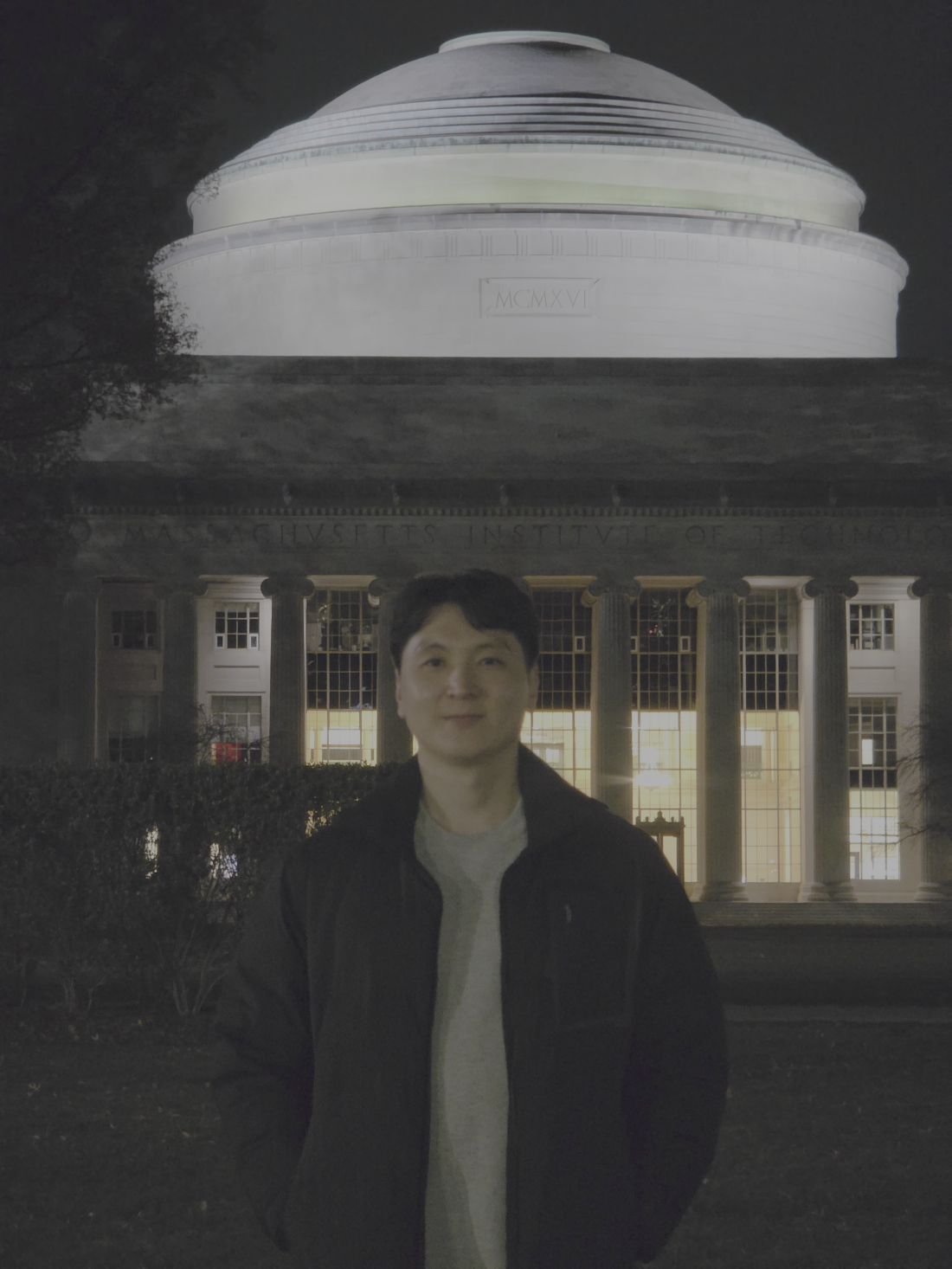
Q. Could you briefly introduce yourself?
My name is Young Jin Yoo. After earning my Ph.D. from the School of Electrical Engineering and Computer Science at GIST (Gwangju Institute of Science and Technology), I am currently working as a postdoctoral researcher at the Research Laboratory of Electronics (RLE), MIT.
At GIST, I focused on optical research, and now I continue that line of work through research on photonic integrated circuits (PICs), lasers, and waveguide-based optical systems at the device level.
Q. Is your current research similar to what you did during your Ph.D.?
At first glance, they may seem similar, but there are actually many differences.
At GIST, my work mainly focused on optical simulations and device fabrication through semiconductor processes. At MIT, however, I work more on material-level device implementation — directly handling materials and realizing functional devices.
While many electrical and computer engineering students focus on circuits or computational fields, I wanted to learn more about device fabrication and processing. That motivation led me to join a lab centered on materials and mechanical engineering. Building on the knowledge I gained during my graduate studies, I am now able to extend my research all the way to actual device development.
Q. What led you to pursue a postdoctoral position after your Ph.D.?
When I first entered graduate school, I initially leaned toward a career in industry. However, as I continued my research, I developed a desire to create my own field.
In industry, research topics are usually determined by the company’s goals, whereas in academia, you can choose your own topics and pursue your own ideas. As I became more fascinated with research and wanted to test new ideas myself, I naturally decided to continue in academia.
Q. How has life as a postdoc in the U.S. been? Some say it can be financially and mentally challenging.
That’s true. The area around MIT has one of the highest living costs in the U.S. — rent and daily expenses are quite expensive, so it’s not easy to say that life is comfortable financially.
However, I believe the experiential and academic value more than makes up for it. Once you manage housing, daily life is manageable, and working in one of the world’s best research environments is an invaluable opportunity.
Of course, there’s the pressure to produce results as a postdoc, which can be stressful. But I see this period as a crucial stage in my career, and I try to turn that pressure into motivation to stay focused on research.
I first spent a short time as a visiting researcher at Georgia Tech, and that experience was so inspiring that I decided to challenge myself further — which fortunately led me to my current position at MIT.
Q. How do you cope with stress during research?
I get stressed the most when results differ from expectations or when deadlines are tight. To manage that, I try to stay healthy through regular exercise.
Ultimately, avoiding problems doesn’t solve them. I believe that persistence always leads to solutions.
Having a personal routine for tackling research problems is essential. If you keep facing the problem consistently, you’ll eventually reach a conclusion in one form or another.
Q. What is your most memorable moment as a researcher?
During the early stage of my master’s, I remember working overnight on an experiment. When the simulation-predicted results were successfully reproduced in real life for the first time, the sun was rising — I completely forgot my fatigue and ran to show my professor.
Another unforgettable moment was when I completed my first paper; the sense of achievement was immense.
Q. What are your future goals or research directions?
Rather than setting specific short-term goals, my dream is to continue developing the research field I started.
Currently, I design and fabricate optical devices based on thin-film materials and aim to extend these into photonic integrated circuits (PICs).
In the long term, I hope to advance these technologies into next-generation information processing applications, such as high-bandwidth memory (HBM) and optical interconnects for data centers, and eventually explore extensions into quantum applications.
Q. Do you have any advice for GIST students?
During your undergraduate years, studying is important — but it’s equally crucial to have diverse experiences that are only possible at that stage.
Through various activities, try to broaden your career perspective and explore what you truly enjoy and excel at. I’ve seen some students who focused solely on academics during undergrad become exhausted in graduate school.
In graduate school, don’t get obsessed only with publications. Instead, embrace a wide range of challenges and problem-solving experiences. In the long run, those experiences — not just one paper — are what sustain your research career.
Q. Finally, why did you choose GIST, and how was your experience there?
My advisor at the time moved to GIST, and I followed — that was the direct reason. But once I arrived, I realized GIST offers an excellent research environment.
The infrastructure is well established, and generous support such as tuition waivers and scholarships allows students to focus on research without financial strain.
In particular, the School of Electrical Engineering and Computer Science has its own cleanroom facility, which is quite rare nationwide.
Thanks to that environment, I was able to experiment freely, and even now, I confidently recommend GIST as a great place for research.

